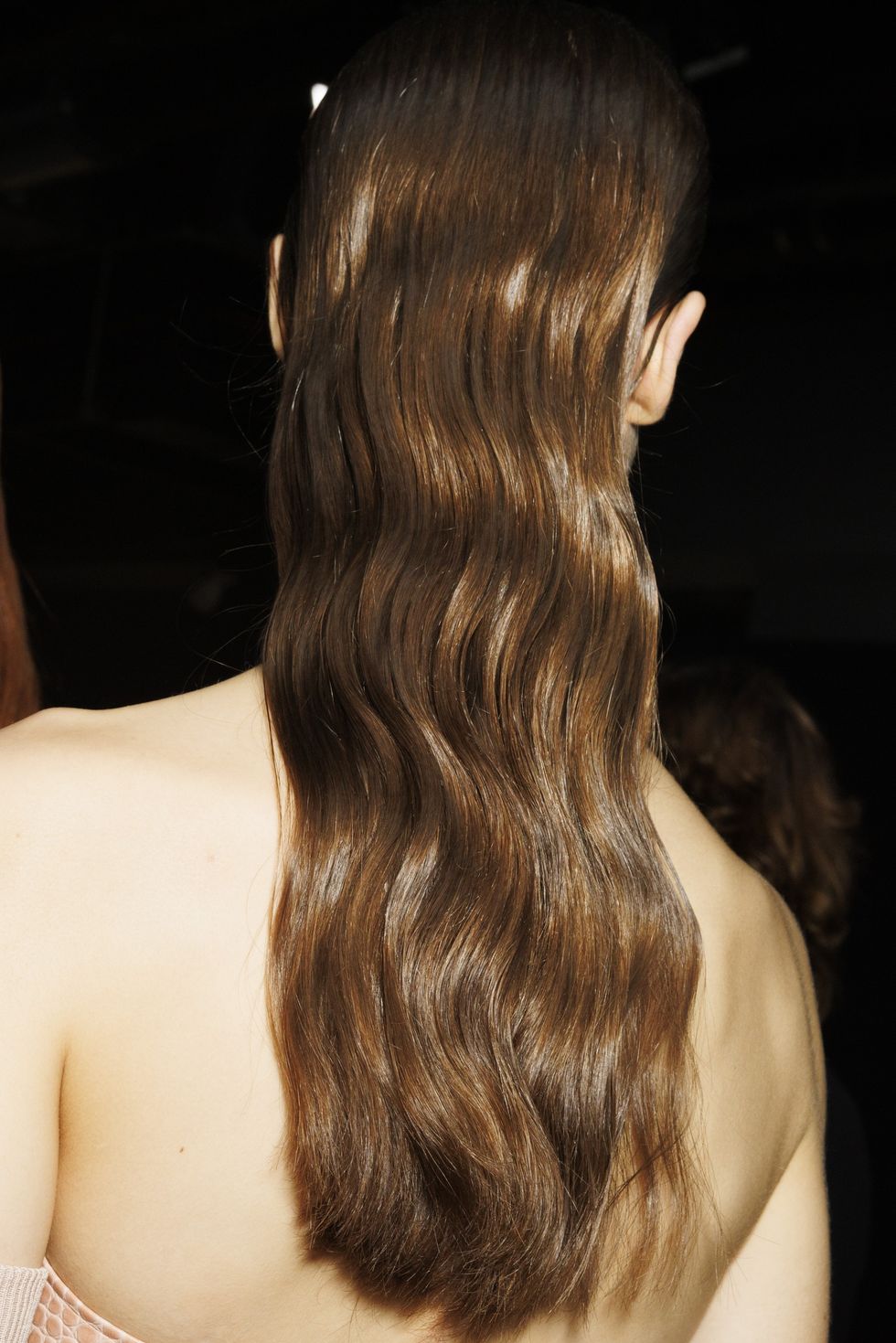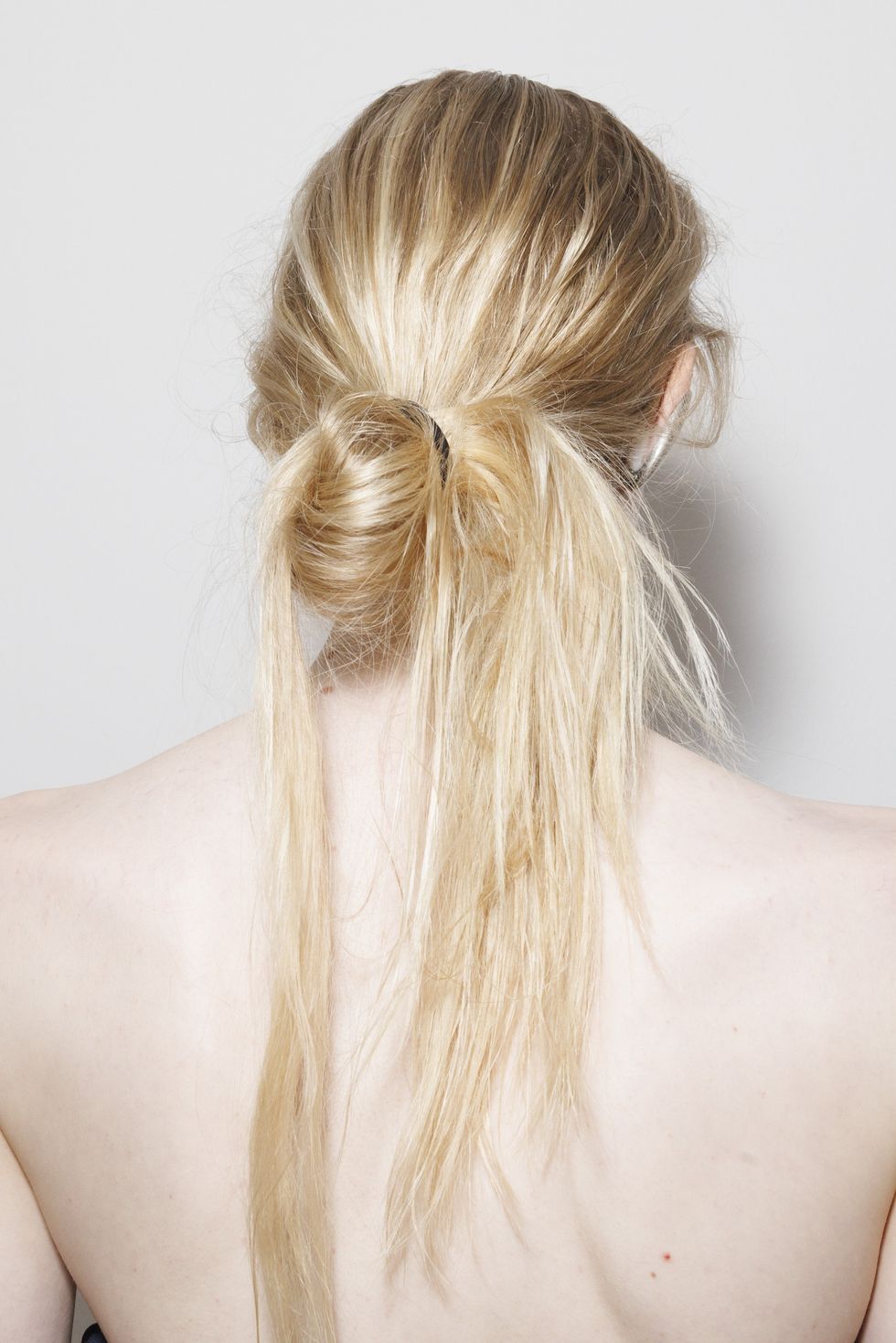Are You Losing More Hair Than Usual? Summer Hair Loss Is a Real Thing
Here's why it happens—and what to do in case it does.

There are good things that come along with the summer season (fresh corn on the cob, peaches, cookouts, ice cream) and a few less than pleasant things, especially if you live in a city (smelly garbage, stifling humidity, being constantly drenched in sweat). And unfortunately for us, there's another item to add to the latter list: summer hair loss.
Yes, you read that right. As the temperature rises, our hair can start to fall out. To investigate further, we got in touch with Dr. Jodi LoGerfo, DNP, APRN, FNP-BC, DCNP, a hair loss specialist and an Aveda partner, to find out exactly what's going on with summer hair loss and what to do if it happens to you.
Meet The Expert
Dr. Jodi LoGerfo is a Doctor of Nursing Practice and a Family Nurse Practitioner certified in Family Medicine and Dermatology. With over two decades of experience in treating a vast array of skin disorders, LoGerfo has been long recognized for her expertise in skin and hair care, and is widely considered an authority on hair loss. She has years of research and clinical work under her belt with patients who have various types of alopecia, enabling her to diagnose the various patterns of hair loss.
Yes, You Probably Shed More Hair in Hotter Weather
"There have been five decent studies from 1991 to 2014 that detail that humans shed more in the summer and early fall," says LoGerfo, specifically during the months of August and September. "The reason for this phenomenon may go back to evolutionary times, when animals dealt with molting hair due to the sun." Great, so basically since we're all just animals, if you're noticing less voluminous hair lately, blame your mammalian heritage.
"Since humans are classified as mammals, this makes sense," LoGerfo adds. "Changes like air temperature and sunlight exposure could possibly play a role in summer hair loss." As we revel in our long days and short, sweaty nights, our hair just might be having its own intense summer experience.
"I can confirm clinically that seasonal hair shedding does exist and is much more common than we realize or has been studied,"
And it's not random. "Our innate ability to possibly postpone shedding until the end of the summer could potentially help defend and safeguard us from excessive ultraviolet exposure during summer," LoGerfo says. "More daylight hours in the summer could also be relevant in how mammals shed hair. Many—not all—mammals grow a winter coat and then shed it, resulting in those having a lighter coat during summer. We could be doing the same."
Basically, if you're finding that your hair falls out more in late summer, you're not imagining things. "I can confirm clinically that seasonal hair shedding does exist and is much more common than we realize or has been studied," LoGerfo says. "I can corroborate that the majority of our hair loss patients who complain about seasonal shedding seem to shed the most during late summer to fall."

If You're Noticing Some Hair Loss Right Now, You're Not Alone
"In a study that appeared in the British Journal of Dermatology in 1991," LoGerfo says, "it was reported that the amount of hair follicles in their growth phase peaked in March and then began to fall steadily to their lowest levels in August and September."
More recently, a study published in the same journal in 2017 looked at the relationship between hot weather and hair loss by looking at search trends. "People appear to Google the term 'hair loss' more often in the summer and fall than in the winter and spring," LoGerfo says. The study concluded, she says, that "individuals seem to be more concerned with hair loss during the summer and fall than in the winter and spring."
Your Hormones May Play a Role
"Fluctuations in hair growth and hair shedding may be associated with changes in hormones," LoGerfo says. "Hormones such as testosterone, melatonin, thyroid hormones, estrogen, and prolactin might play a role in seasonal hair shedding."
Though this process is natural and can happen in the healthiest people with the most lustrous hair of them all, if your hormones are off balance, it can't help your case. If you already suspect your hormones might be a little wonky, a quick trip to the doctor to get things checked out is never a bad idea.
Here's How Normal Hair Loss Works
"In a normal hair cycle, a normal hair goes through three major phases: anagen, or growth; catagen, or transition; and telogen, resting," LoGerfo says. "After four to six weeks of being in the resting phase, the hair sheds from the follicle."
Since each hair goes into each stage at different times, shedding doesn't happen all at once. "Instead, there's a normal shedding of 50 to 150 hairs per day," she says, unless you're dealing with an illness. In the growth phase, hair can grow about a centimeter per month, and each strand of hair can stay in the growth phase for three to five years.
"The span of hair growth is mostly determined by genetics," she says. "The longer the hair stays in anagen, the longer the hair will grow. At any given time, 85 to 90 percent of the hairs on one's head are in anagen." Anagen is the sweet spot—when your hair is in the anagen phase, it's growing, slowly but surely.

Try This If You're Experiencing Hair Loss
"Seasonal shedding may be difficult to avoid, as it seems to be cyclical," LoGerfo says. But there are a few things you can do to make things better if you're worried about seasonal hair loss.
For starters, find your happy place. If you're experiencing more hair loss than normal, try to stay calm. I know—it's easier said than done, but try to lean into activities that make you feel good, engage in social activities with friends, and eat health foods. "The good news is that seasonal hair loss is usually temporary," she says.
And before you get inspired by some random "miracle" product you saw on Instagram, pause. Steer clear of popping any vitamins or other supplements, especially iron, unless you're working with a doctor, says LoGerfo.
"Scalp camouflage can also help," LoGerfo adds. This can include "hairstyling techniques, haircuts and color, scalp camouflage via sprays or powders, hair-texturizing products, and hair prosthetics—all are extremely useful."
LoGerfo recommends Invati Advanced, or similar products, which "envelop each hair and increases the diameter by 6.1 percent. It's as if you added 6,100 more strands of hair," she says. The product "can also decrease hair loss by up to 53 percent due to breakage from brushing, and it can improve the thickness and volume of your hair during periods of increased shedding."
Overall, remember—seasonal hair loss is normal, and if you're noticing more hair in your brush, don't panic. Stay calm, and trust that you'll be back to normal once the fall sets in. And if you're truly concerned, or the hair loss seems like it's more than normal seasonal shedding, it's always smart to talk to your doctor.




